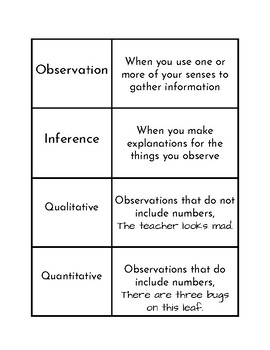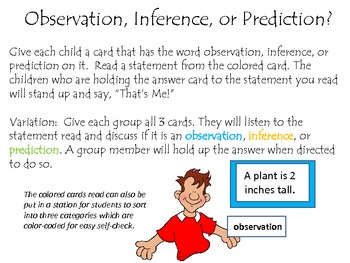

Using what you know, what inferences can you make? You might describe size, shape, direction, quantities, distances….

Using what you know, are there any inferences you can make? They may be from prehistoric times or much more recent. Take a look at this scene of fossilized footprints. Tell students that they are going to be looking at an image of fossilized footprints, but in stages. Here is a classic activity that helps students to differentiate between observation and inference, but also encourages them to revise their thinking as more information becomes available. Washington, DC: The National Academies Press. Teaching About Evolution and the Nature of Science. Note: The following activity is based on National Academy of Sciences. What's the difference between an observation and an inference?.When we make inferences in science, we have to be very careful and question the validity of those inferences. If we did, we would learn to hate reading. When reading, we don’t stop and evaluate all of our inferences.

If authors didn’t rely on readers to make proper inferences, they would have to write books and stories that are too long and very boring. They learn that authors give them only a certain amount of information and expect the reader to use what they already know to fill in the missing pieces. Students draw inferences when reading.Students practice making both qualitative and quantitative observations. Students learn the difference between qualitative and quantitative observations. Students practice making inferences based on observations. Students review the role of the five senses in making observations. Lesson: Going from Observations to Inferences


 0 kommentar(er)
0 kommentar(er)
